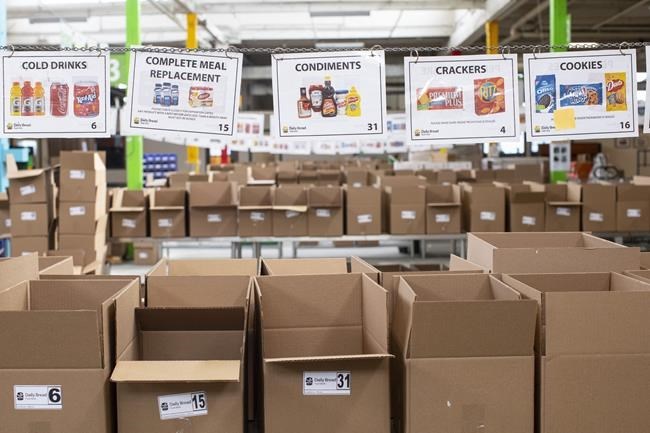HALIFAX — Nova Scotia food banks and community groups are calling for an immediate increase in income assistance for the growing number of residents in a state of "crisis" who cannot afford housing or food.
Current income assistance rates are “grossly” below the poverty line, Nick Jennery, executive director of Feed Nova Scotia, told a legislative committee Tuesday. People who rely on the program, he said, have described the situation as "flailing around in the water with no life raft."
"There’s a deep cruelty in leaving thousands of Nova Scotians on income assistance to live a life of damaging poverty .... Leaving so many Nova Scotians continuously waiting for that life raft is a political choice."
The province's financial assistance program doesn't prevent food insecurity, Jennery said, adding that up to 45 per cent of people using the 140 food banks in Feed Nova Scotia’s network rely on government assistance as their primary source of income.
He said the massive demand for food was highlighted over the holidays, when his network helped feed 20,000 residents over Christmas — the largest number of people in the history of its holiday food program.
Christina Carter, executive director of community services non-profit Chebucto Connections, told the committee that the organization’s work is getting harder as the cost of living rises and pushes more residents in the Spryfield area of Halifax toward homelessness.
She said that over the span of just 10 days, her group worked with a newly homeless person who was evicted for allowing people without housing to "couch surf," and a single parent with cancer who was evicted for missing a rent payment while waiting to become eligible to apply for social assistance.
Carter said that during that same 10 days, a senior living in poverty told her group they were considering medical assistance in dying “because they just don’t see another way out of the struggle."
She said income assistance must be immediately increased to catch up with the cost of living, and indexed with the rate of inflation to ensure vulnerable people are fed and housed. “The government needs to act on this crisis as quickly as they did with COVID-19,” Carter said in an interview following Tuesday’s committee hearing.Â
“We’ve seen first-hand that changes can be made, that they can cut the red tape and do all kinds of things so that people are safe. So why is this any different?”
Data from the 2021 census shows that Nova Scotia is tied with British Columbia for having the highest rate of poverty in Canada: 9.8 per cent of residents live below the poverty line. Nova Scotia also has the highest rate of child poverty across Canada, at 11.4 per cent — well above the 8.5 per cent national rate.
This report by The Canadian Press was first published Jan. 10, 2023.
---
This story was produced with the financial assistance of the Meta and Canadian Press ߣÄĚÉçÇř Fellowship.
Lyndsay Armstrong, The Canadian Press



